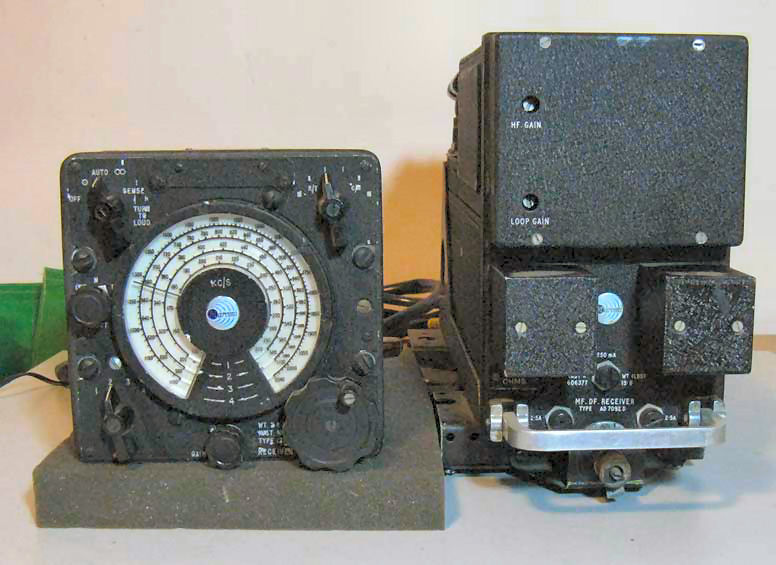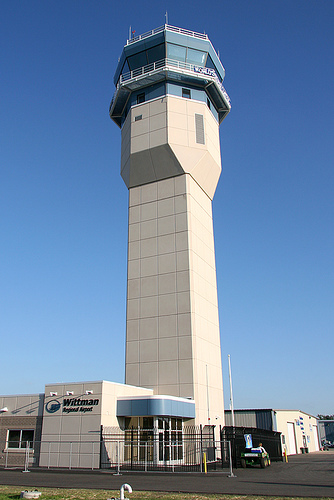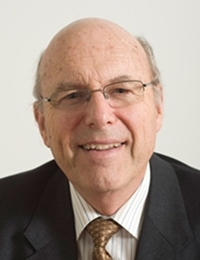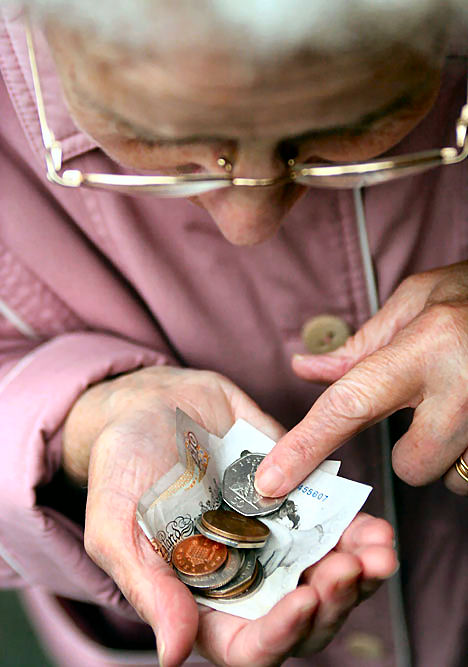|
Radschool Association Magazine - Vol 33 Page 8 |
|
Privacy Policy | Editorial Policy | Join the Association | List of Members | Contact us | Index | Links | Print this page |
|
|
|
Global Warming.
Early in September, the SBS TV show, Insight, put to air an Insight Special with internationally renowned climate change scientist Stephen Schneider. The show was recorded in June of 2010, but, unfortunately, a few weeks after the program was recorded, Stephen Schneider died on a flight from Stockholm to London. He was 65 years old and had been battling a serious illness for some time.
Stephen Schneider was a passionate believer that science should engage directly with the public on the issue of climate change and it was in this spirit that he appeared on INSIGHT where he faced a crowd of 52 climate sceptics who were asking the questions.
Stephen Schneider was the Professor of Interdisciplinary Environmental Studies at Stanford University and was an internationally recognised leader in research on climate change. He served as a consultant on the issue to every U.S. President from Nixon to Obama.
To keep the balance, here's an opposing view
|
|
Alcohol preserves everything – except secrets.
|
|
Space Travel.
Just the other day I was thinking about taking a quick trip out to the nearest star, Proxima Centauri, which is only about 4.2 light years to the west of Broome. I considered Alpha Centauri, but I was afraid its binary star system might confuse the Land Cruiser’s GPS I'd use for navigation.
One of the first steps for my trip is to calculate the power required. For a variety of practical reasons, I'll make it a 50-year trip. I could make it in 4.2 years, or close to it, if I really got going, but that would require a lot more power because of the much higher acceleration and would probably smash my body against the back wall of the spacecraft. Taking a leisurely 50-year trip to Proxima Centauri will take a lot less fuel, and so less weight, and I'll have time for some reading.
The spacecraft that went to the moon weighed in at about 30,000 kg. That might be a bit small. I'll be gone for 50 years, so I might need a little more room than that for food, water, recreation, and elbow space. But I can use the latest technology to save weight, and I could probably live in a confined space for a mere 50 years, so let’s work on 30,000 kg.
To accomplish the acceleration (first half of the trip) and deceleration (second half) of 30 tonnes of bits of stuff and me, to travel the 397,353,600,000,000Klms in 25 years, will possibly require about 68 megawatts of energy per hour, or about 5% of the Gladstone coal-fired power plant unit per hour. That adds up to around 30 million gigawatt-hours, or 30 terawatt-hours in total.
If I am efficient and generate 1 mwh from 225 Kg of coal, we'll need 212,000 tonnes of coal and 292,000 tonnes of oxygen, which will add a little weight to my 30,000 kg spacecraft. Of course, it would take millions of times more coal and oxygen than this to accelerate the coal and oxygen itself.
So maybe oxidation is not the best way to power my spacecraft. Even if I use natural gas, hydrogen, or firewood, it will not be feasible.
So I'll go with nuclear power. But it will still take a whole lot of fuel to generate the 30 terawatt-hours of power I need to get to Proxima Centauri, even at near 100% efficiency. In addition, if I use thrusters that use jets of matter to propel the spacecraft, I will need a lot of tonnes of matter to spew out the nozzles. And it will require millions more tonnes to accelerate those tonnes...This trip to Proxima Centauri is sure getting complicated. It just takes far too much power to get there in a reasonable time.
Maybe, just maybe, there is a reason I have never met someone from another star system.
|
|
ARN 6.
John Mackesy has rebuilt an old favourite of his, the AN/ARN-6 Radio compass that was used in the Canberras. He says he rebuilt it a few years ago and it is complete and bog standard. He says “they go well - I used to fly around with them in the '60s.”
He says “John McLaren tells the story of his first job after Radschool. He was taken to a hangar piled high with ARN-6's, at least a hundred or more and told: 'Here John, this lot's yours. We want them all fixed'.
He got them all done eventually, and never touched one again!”
|
|
Corduroy pillows are making headlines!
|
|
Oshkosh.
Oshkosh, which has a normal
population of about 63,000 people, is a city in Wisconsin, USA, and is
located on Lake Winnebago. It is also the home of the Experimental
Aircraft Association’s (EAA) air show, the EAA AirVenture Oshkosh, "The
World's Greatest Aviation Celebration." It is the world's largest
airshow
and is held every year, lasts for 7 days and starts on the last Monday
in July. The EAA is a non-profit organization, dedicated to
home-built aircraft,
restored aircraft, and
light-sport aircraft.
During AirVenture, air traffic at Wittman Regional Airport exceeds that of any other airport in the world.
It is estimated that between 10,000–15,000 aircraft visit Wittman Field each year during the fly-in with attendance at somewhere between 200-300,000 people. Even though it’s all VFR, I pity the controllers, they definitely earn their pay……how would you like to be the poor old Flow Controller...
To accommodate the huge number of aircraft around the airport and the nearby airspace, a NOTAM is issued each year, choreographing the normal and emergency (if need be) circuit procedures. Air/ground comms between controller and aircraft are kept to a minimum with most instructions being broadcast on the ATIS. If you plan to fly into Oshkosh, you have to know what you’re doing….
Click HERE to listen to a typical 5 minutes of ATC at Oshkosh.
Hotels, dormitories, and many private guest rooms in the region are almost always filled to capacity during the fly-in. There is also a Hilton Hotel located directly on the airport grounds, however, the majority of visitors camp, either under the wing of their airplane, in a van or campavan, or next to their car – a bit like Birdsville, but on a humungous scale. Birdsville number their aircraft movements in the hundreds – Oshkosh in the thousands……..
To ensure the event runs smoothly, more than 4,000 volunteers contribute approximately 250,000 hours before, during and after the event. These volunteers are primarily EAA members and provide flight line marshaling, war bird security, crowd control, cleaning, custom (homebuilt) aircraft parking and Emergency Services. Hundreds of extra police are brought in to control vehicular traffic.
Approximately 1,100 portable toilets are supplied for the event, and EAA estimates that more than 2 million sheets of toilet paper are used – so there!!!
You can see some wonderful examples of the aircraft at the 2010 show HERE
Vietnam Vets association of Aust.
Bruce Jones has let us know that there is now a site dedicated to the Vietnam Vets which contains many photos and which is definitely worth a look.
You can see it HERE
We pinched one of the photos from the site, (right) and even though the face is familiar, this old codger has hidden his true identity by wearing dark glasses.
We think we know who he is, but we’re not sure……
Does anyone recognise this bloke, who incidentally, should have been at work instead of being on the street, making a nuisance of himself…....
|
|
You're just jealous because the voices only talk to me.
|
|
Life on Earth wiped out every 27 million years.
FIRST the bad news - scientists are now 99 per cent certain mass extinction events on Earth are as regular as clockwork. The good news? There's still 16 million years to go until the next one. That's the finding from scientists from the University of Kansas and the Smithsonian Institute in the US, where they've mapped out all Earth's extinction events from the past 600 million years. According to what they've seen, life on Earth is wiped out every 27 million years.
It's not going to be global warming that finishes us all off, either.
Unfortunately for our planet, it passes through a shower of comets every 27 million years, and it very rarely escapes unscathed. Of the last 20 times we made a galactic run for our lives through the comet shower, Earth only escaped with most of its biological organisms intact six times. The most widely publicised one was 65 million years ago, when a 15km wide asteroid hit the Earth in Mexico with the force of a billion atomic bombs and wiped out the dinosaurs.
There's also more bad news - the extinction scenario rate is not strictly accurate. Sometimes the asteroids ambush all life on Earth up to 10 million years earlier than they should. The good news is all on the side of our Sun's dark twin Nemesis, which until now received an unfairly large proportion of bad press, being considered responsible for the bombardment.
The theory used to be that Nemesis passed through a huge, even by universal standards, belt of dust and ice called the Oort cloud (named after Jan Hendrik Oort ) every 27 million years, sending the comets our way. Now scientists say that because the extinction scenarios happen so regularly, Nemesis couldn't be responsible, as its orbit would have changed over such a long time.
Which isn't to say the Sun's evil twin - which lies about one light year away from it - is not still spraying Oort cloud comets all over our galaxy, just that they're hitting other planets these days.
Which still leaves the question as to why we've drawn the short straw and what we're going to do about it. The last one occurred 11 million years ago, so at least Doomsday cult members can now set their clocks for the year 16,002,010, rather than the fashionably Hollywood mark of 2012. Me?? I’ll be too old to worry about it…
So, we all a little breathing space – that is, if you don't believe in global warming.
Some blokes have interesting jobs.
This is unbelievable, it makes me nervous just watching it, you could never pay me enough to do this. It’s incredible what some people do for a living!!!!!!!!!!
Click HERE, wait for the cartoon intro to finish, then hold on to your seat.
What happens to your partner when you die??
The ACT Defence Widows' Support Group (DWSG) provides support to Defence widows and widowers, particularly the newly bereaved. The Group contacts them after the funeral of their partner. Experience has shown that the same problems seem to surface repeatedly and that forward planning would help relieve some of the burden and distress to your partner when death occurs.
The DWSG has produced an informative paper on this and it is worth printing out and keeping handy.
You can get it HERE.
|
|
Dyslexics Have More Nuf.
|
|
Pensions – tax by stealth. Robert Gottliebsen, 10 August, 2010
I have just realised that I and other journalists have made a serious mistake. As a result of believing Canberra’s spin, we thought pensioners had been well looked after by the Labor government. Now, with the help of accountant Robert Parry, I have looked past the spin and discovered pensioners have been treated very badly.
There is probably no major group in the community that has been treated so harshly.
I am not sure how many pensioners read Business Spectator regularly, but I am sure many readers (including me) know a lot of people on the age pension and a lot who expect to mix their pension with retirement income. As a result of the government's decisions of the past year or so, would-be pensioners and, where possible, pensioners, will need to reassess their strategy.
I can hear the reaction from the ALP spin doctors: “Mr Gottliebsen, get your facts right? The Rudd/Gillard government lifted the single pension from $599 (with allowances) a fortnight in July 2009 to $672 a fortnight in September 2009. And then on March 2010 the single pension with allowances rose to $701 a fortnight – that’s an increase of 17 per cent in nine months. No government has ever done that before.”
If only that was all that was done.
To fund much of the outlay on the increased single pension, the government made a series of other changes:
The government last March boosted the deeming rate by 50 per cent, from 2 to 3 per cent for the first $42,000 and from 3 to 4.5 per cent for anything above that. That means that whereas a single pensioner could have $137,066 in investments before those investments affected their pension, that level has been reduced to $96,044. And of course the deeming effect is multiplied by the lift in the effective "tax" rate from 40 to 50 per cent.
To keep their pension, a single pensioner must quickly spend $41,000. They can’t give it away. Many will lie about their spending and hide the money under the bed.
It was clear that the savage nature of the changes would actually reduce pensions for many people, so a grandfather clause was inserted so no pension would be reduced by the lift in the effective pension tax and the other changes. But a large number of people have received no additional pension and many still need an even higher base pension before they are entitled to a rise in cash payments. I am not sure how many pensioners understand what is happening to them because all they hear from the government is that they are better off and the Opposition has not twigged to the effect of the structural changes.
If Tony Abbott wants the pensioner vote he should restore the traditional 167 per cent relationship between couples and single pensioners and restore the 40 per cent effective tax rate.
Meanwhile, pensioner couples with their backs to the wall should consider going into a state of separation (it can be done) and limiting their earnings to $6,500 a year or $125 a week. Any additional wages above $125 a week must be cash or they will be "taxed" at 50 per cent via pension reduction – the highest tax rate in the country.
Yet that’s Australia 2010 style. The spin promises a benefit. Reality takes it away.
True Story
Recently John Broughton and I did a 2 week trip around Queensland (see HERE). When we were up at Gladstone, we decided to toss a line into the bay and have a go at catching a few fish. We spent a few hours on the bank, in the sunshine without much luck and eventually we ran out of worms.
Then I saw a King Brown with a frog in his mouth and frogs are supposed to be good bait. Knowing the snake couldn't bite me with his mouth stuffed full with frog, I grabbed him right behind the head, got a screw driver and wedged the frog out of his mouth and put it in the bait bucket.
Now the dilemma was how to release the snake without getting bitten. I grabbed my trusty bottle of Bundaberg rum (a real man never travels without one) and poured a little rum into its mouth. His eyes rolled back and he went limp, I released him into the water without incident, and carried on fishing with the frog.
A little later I felt a nudge on my foot.
There was that same snake with two frogs in his mouth.
|
|
Back Go to page: 1 2 3 4 5 6 7 8 9 10 11 12 13 14 15 16 17 18 19 20 Forward |









